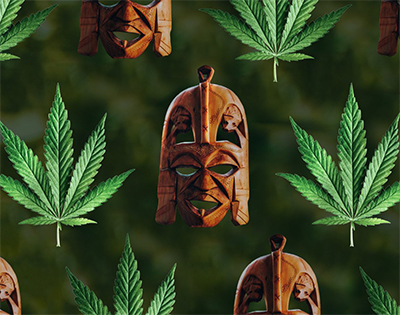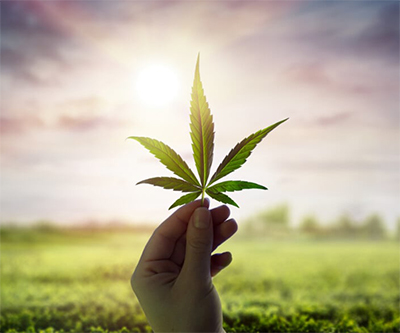Cannabis, a plant with a storied past and a dynamic present, has evolved remarkably over centuries. From its ancient origins and traditional uses to its modern-day applications and legal battles, the journey of cannabis reflects broader societal changes in medicine, culture, and legislation. This article takes a look into the historical context, transformative shifts, and current landscape of cannabis.
Ancient Beginnings: The Roots of Cannabis Use
The use of cannabis dates back thousands of years. Archaeological evidence suggests that cannabis was cultivated in China as early as 4000 BCE. The ancient Chinese used the plant for a variety of purposes, including making hemp for rope and textiles, as well as for its psychoactive properties. Emperor Shen Nung, considered the father of Chinese medicine, documented the use of cannabis in his pharmacopeia around 2737 BCE. He recommended cannabis for various ailments, such as gout, rheumatism, and malaria.
In ancient India, cannabis was revered and incorporated into religious practices and Ayurvedic medicine. Known as “bhang,” cannabis was consumed in drinks during religious ceremonies and festivals. The Atharva Veda, a sacred Hindu text dating back to around 1500 BCE, mentions cannabis as one of the five sacred plants and highlights its medicinal and spiritual significance.
Cannabis in the Ancient Middle East and Africa
 The influence of cannabis spread to the Middle East and Africa through trade routes. In ancient Egypt, it was used for medicinal purposes, including as a treatment for glaucoma and inflammation. Cannabis pollen has been found in the tomb of Pharaoh Ramses II, indicating its use in rituals and possibly as an entheogen.
The influence of cannabis spread to the Middle East and Africa through trade routes. In ancient Egypt, it was used for medicinal purposes, including as a treatment for glaucoma and inflammation. Cannabis pollen has been found in the tomb of Pharaoh Ramses II, indicating its use in rituals and possibly as an entheogen.
In Africa, cannabis was used by various tribes for medicinal and spiritual purposes. It played a role in traditional healing practices and was often smoked or infused in teas. The plant’s psychoactive properties were utilized in rituals to communicate with ancestors and deities.
The Greco-Roman Era
The Greeks and Romans were also familiar with cannabis. The Greek historian Herodotus mentioned the Scythians, a nomadic tribe, who inhaled cannabis smoke during funeral rites. The Roman physician Galen documented its medical uses, noting its ability to relieve pain and induce sleep. However, cannabis was not as widely used in Europe during this period compared to its extensive use in Asia and Africa.
The Middle Ages and Renaissance: Cannabis in Europe
During the Middle Ages, cannabis cultivation spread across Europe primarily for its fiber, which was used to produce rope, sails, and textiles. However, its medicinal properties were also recognized. Notable medieval physicians like Avicenna and Hildegard of Bingen documented the therapeutic uses of cannabis.
The Renaissance period brought renewed interest in the medicinal potential of cannabis. European explorers and traders, returning from their journeys, brought with them knowledge of cannabis’ diverse applications. This era marked the beginning of a more systematic study of the plant, laying the groundwork for future scientific exploration.
The 19th Century: Cannabis in the Medical Mainstream
The 19th century witnessed a significant shift in the perception and use of cannabis. Western medicine began to formally incorporate cannabis extracts into various treatments. Irish physician William O’Shaughnessy, while working in India, conducted extensive research on cannabis and introduced it to European medicine in the 1830s. He documented its effectiveness in treating pain, muscle spasms, and convulsions.
Cannabis-based medicines became widely available in Europe and North America. Pharmacies sold tinctures and extracts to treat a range of conditions, from migraines to menstrual cramps. Prominent medical journals published articles on the therapeutic benefits of cannabis, solidifying its place in the medical mainstream.
The Early 20th Century: The Beginning of Prohibition
 The early 20th century brought significant changes in the legal status of cannabis. The rise of the temperance movement and concerns about drug addiction led to increasing regulation of various substances, including cannabis. In the United States, the Marihuana Tax Act of 1937 effectively criminalized cannabis, imposing heavy taxes on its cultivation, distribution, and possession.
The early 20th century brought significant changes in the legal status of cannabis. The rise of the temperance movement and concerns about drug addiction led to increasing regulation of various substances, including cannabis. In the United States, the Marihuana Tax Act of 1937 effectively criminalized cannabis, imposing heavy taxes on its cultivation, distribution, and possession.
This period saw a dramatic shift in public perception. Propaganda campaigns, such as the infamous “Reefer Madness” film, portrayed cannabis as a dangerous drug that led to criminal behavior and mental illness. These efforts contributed to a global wave of prohibition, with many countries enacting strict anti-cannabis laws.
The Late 20th Century: The Path to Legalization
Despite the widespread prohibition, the counterculture movements of the 1960s and 70s brought renewed interest in cannabis, particularly its recreational use. Advocacy for the decriminalization and legalization of cannabis gained momentum. Research into the plant’s medical potential also continued, albeit under strict regulatory conditions.
In 1996, California became the first U.S. state to legalize medical cannabis with the passage of Proposition 215. This landmark decision paved the way for other states and countries to reconsider their stance on cannabis. Canada, for instance, introduced medical cannabis regulations in 2001, followed by the legalization of recreational cannabis in 2018.
The 21st Century: A New Era of Cannabis
The 21st century has seen a dramatic shift in the legal, medical, and cultural landscape of cannabis. Today, cannabis is legal for medical use in numerous countries and for recreational use in several regions, including parts of the United States, Canada, and Uruguay.
Medical Cannabis
Modern research has validated many traditional uses of cannabis and uncovered new therapeutic applications. The discovery of the endocannabinoid system, a complex cell-signaling system in the human body, has provided a scientific basis for understanding how cannabis compounds interact with various physiological processes. Cannabinoids, such as THC and CBD, are now recognized for their potential to treat conditions like chronic pain, epilepsy, multiple sclerosis, and anxiety.
Pharmaceutical companies are developing cannabis-based medicines, and patients can access a variety of cannabis products tailored to their specific needs. The stigma surrounding medical cannabis has diminished significantly, with many healthcare professionals acknowledging its benefits.
Recreational Cannabis
The legalization of recreational cannabis has created new markets and economic opportunities. The cannabis industry has expanded rapidly, encompassing cultivation, processing, distribution, and retail. Legal cannabis markets generate billions of dollars in revenue and create thousands of jobs. Additionally, the industry has sparked innovation in product development, including edibles, beverages, and topicals.
Public perception of recreational cannabis has also evolved. Once demonized, cannabis is increasingly viewed as a substance similar to alcohol, with regulated use deemed acceptable for adults. Social equity programs aim to address the historical injustices of cannabis prohibition, ensuring that communities disproportionately affected by the war on drugs have access to the economic benefits of legalization.
Challenges and Future Directions
 Despite significant progress, the evolution of cannabis is not without challenges. Regulatory frameworks vary widely between jurisdictions, leading to inconsistencies in product quality, safety, and access. Research is often hampered by legal restrictions, limiting our understanding of cannabis’ full potential and risks.
Despite significant progress, the evolution of cannabis is not without challenges. Regulatory frameworks vary widely between jurisdictions, leading to inconsistencies in product quality, safety, and access. Research is often hampered by legal restrictions, limiting our understanding of cannabis’ full potential and risks.
Moreover, social and political opposition to cannabis remains in some regions. Efforts to dismantle the remaining vestiges of prohibition continue, as advocates push for broader legalization and reform of drug policies.
Looking ahead, the future of cannabis will likely be shaped by continued research, technological advancements, and evolving social attitudes. As scientists uncover more about the plant’s capabilities, we can expect new medical applications and improved cultivation techniques. Additionally, the global market for cannabis is poised for further expansion, with increasing acceptance and legalization efforts worldwide.
Conclusion
The evolution of cannabis from ancient remedy to modern mainstream is a testament to its resilience and versatility. Its journey reflects broader societal shifts in medicine, culture, and law. As we move forward, the continued exploration and acceptance of cannabis hold the promise of unlocking new benefits for health, well-being, and economic development. The story of cannabis is far from over, and its next chapter is eagerly awaited by many.

